In 2019, Nigel Denton-Howes detailed Framestore‘s involvement in Alita: Battle Angel before embarking on new ventures at ReDefine and Eyeline Studios. After working on The Gray Man, Black Adam, The Flash, and Aquaman and the Lost Kingdom, he is back now to explain his work on Damsel.
How did you get involved on this movie?
I started on the project after principal photography was done. Netflix and the producers of the film asked me to come on to help push the VFX forward both from a look and, in the case of the dragon, performance perspective.
How was the collaboration with director Juan Carlos Fresnadillo?
Really fantastic. JC is a great collaborator and is very easy to work with. We spent a lot of time in dark rooms dreaming up cool things for our dragon to do and new moments to heighten the suspense of the film. It helps that we have a mutual love of good food.
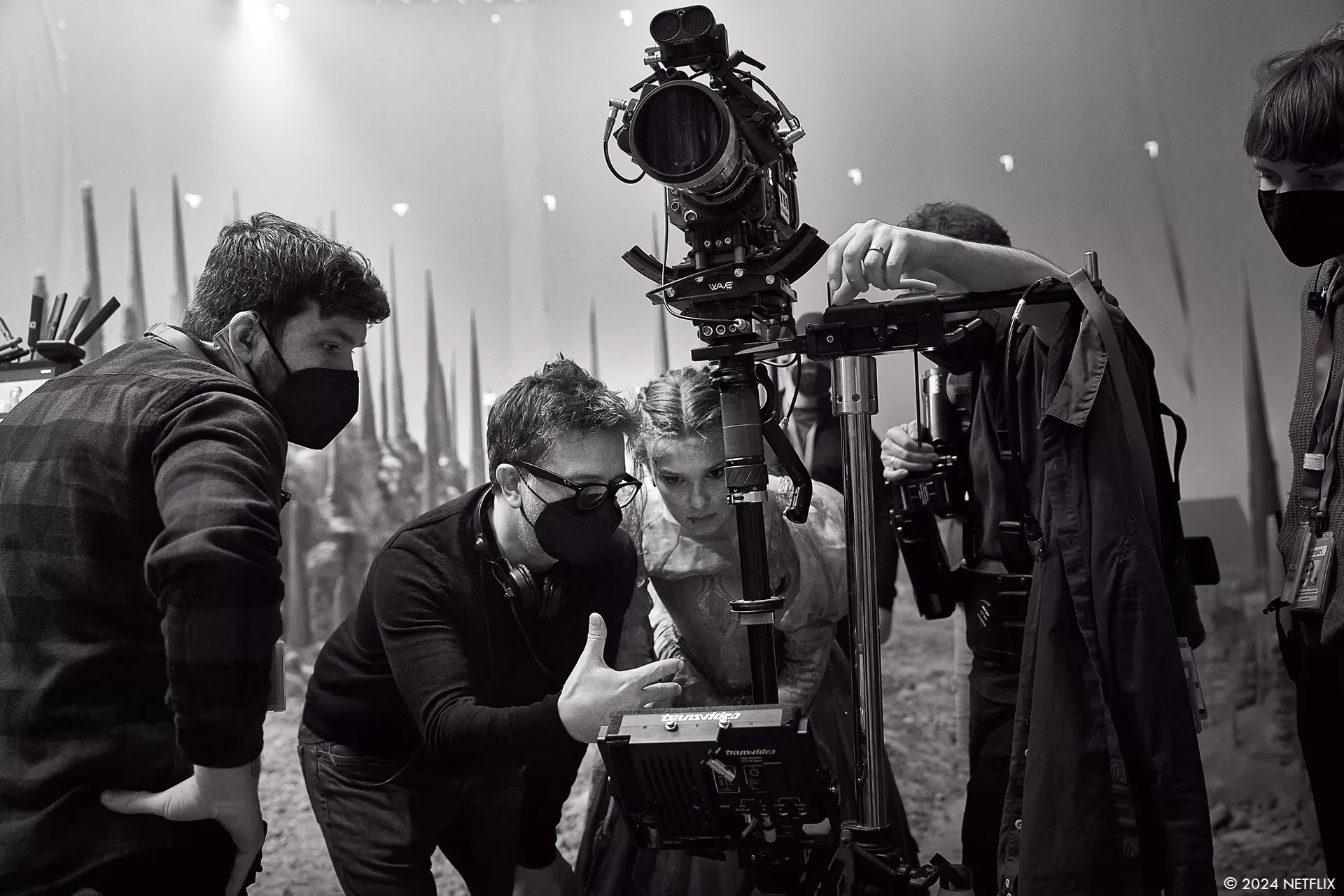
How did you organize the work with your VFX Producer?
My producing partner on the film was Rupert Smith, a really talented and supportive collaborator. He and I worked together to break down any changes from editorial, award that work to previs companies and finally on to VFX vendors. The relationship between a supervisor and producer is critical on any film, but even more so on shows such as Damsel that are so dependent on the VFX working well. We spent well over a year sitting beside each other in our production office making sure that we could cope well with changes as they happened and of course on how to get the best work possible from the vendors.
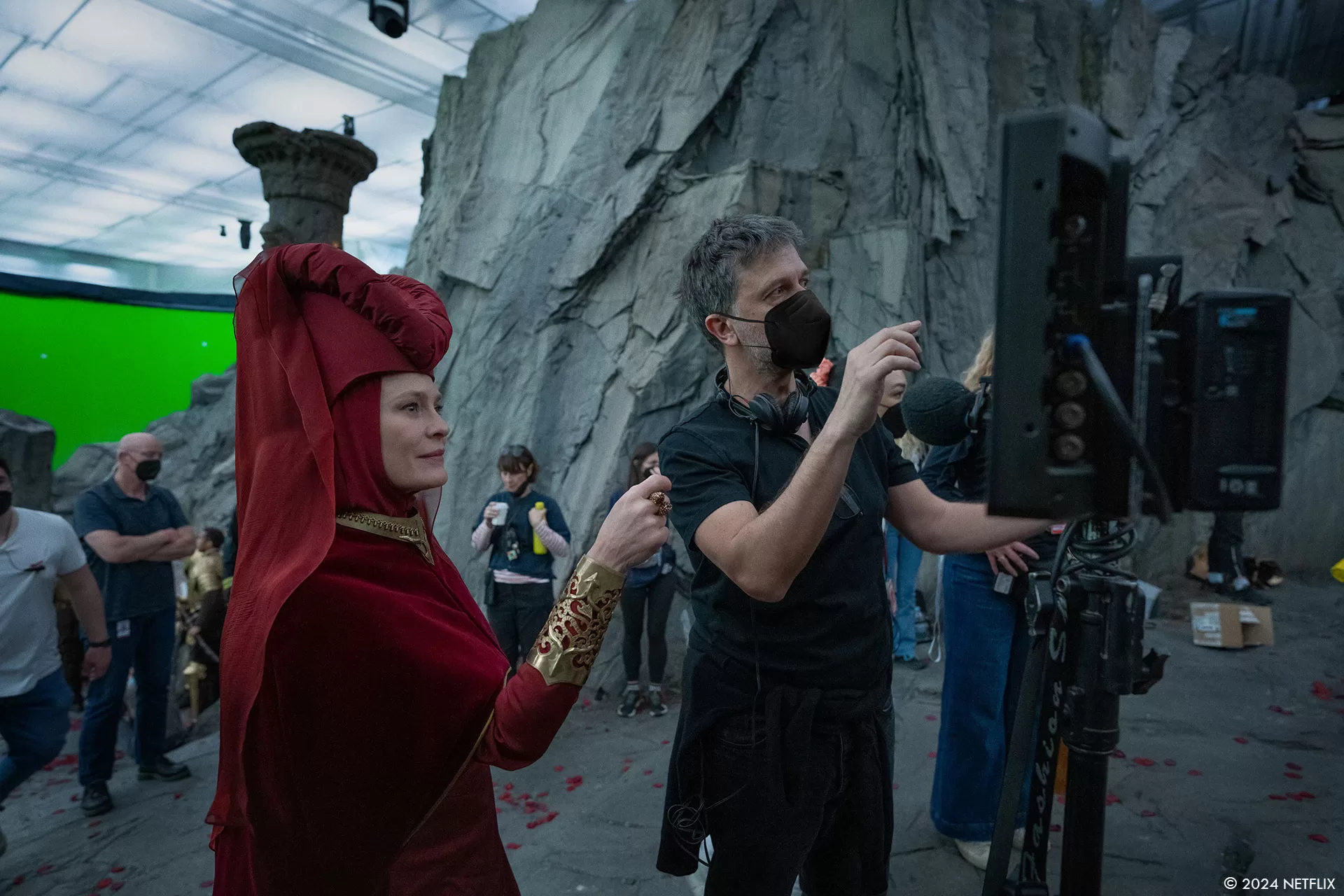
How did you choose the various vendors and split the work amongst them?
A couple of the vendors were already on the show when we started. One of Us had been tapped to take care of the dragon and the larger interior environments and Rodeo FX had been assigned the Aurea environment, glow worms, ocean journey and the crystal cavern. Over the course of the film a number of changes to to the story took place and we used those moments to bring on other vendors based on their historical work. For example, Pixomondo (PXO) was brought on to do exterior dragon shots (along with a whole lot more of the film) on the back of their great work on the Game of Thrones prequel.
Can you walk us through the initial conceptualization process for the creation of the impressive dragon?
The dragon was completed very much with the guidance of our amazing production designer Patrick Tatopoulos. After I came on board he and I spent a lot of time working with the talented team at One of Us to really hit the feeling shown in his initial conceptual work for the dragon. There are always minor changes that need to be made to designs as a character begins to be animated and Patrick was a close collaborator on all of those changes.
We went through the usual process of sculpts and turntables and concept poses, of course, but this was one of the rare occasions where Patrick was available to do live sessions with the artists working on the sculpts and paints of the creature. It was a real honour to get to know Patrick so well over the course of the project.
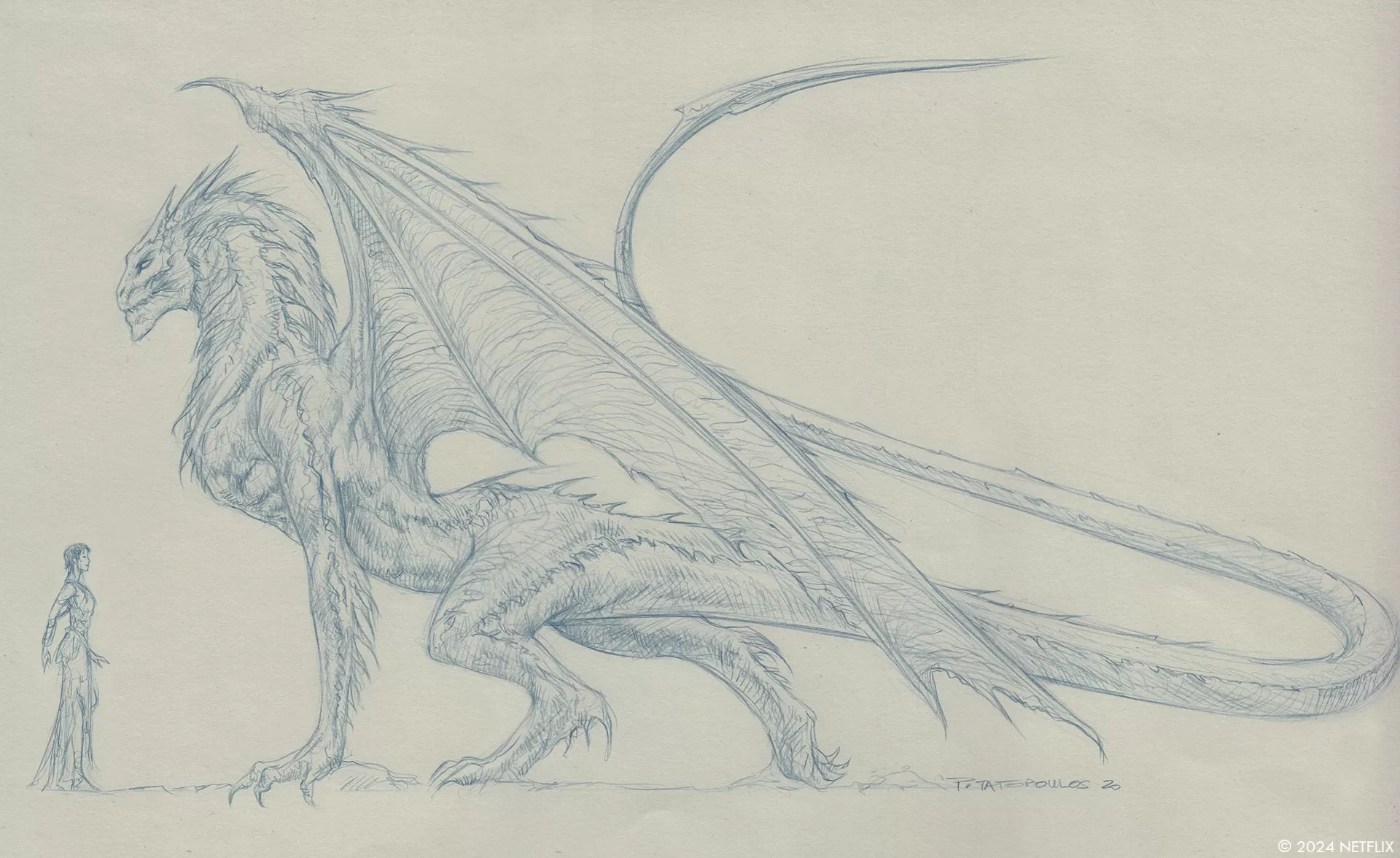
What were some of the key design inspirations behind crafting the appearance of the dragon in the film?
Patrick and JC really wanted the dragon to have unique details to her. In the end she is really anatomically much closer to a cat than a lizard like you would see with more typical dragons. This means we had opportunities for her to move around on the ground just as gracefully as in the air. It was a really nice break from what you would expect.
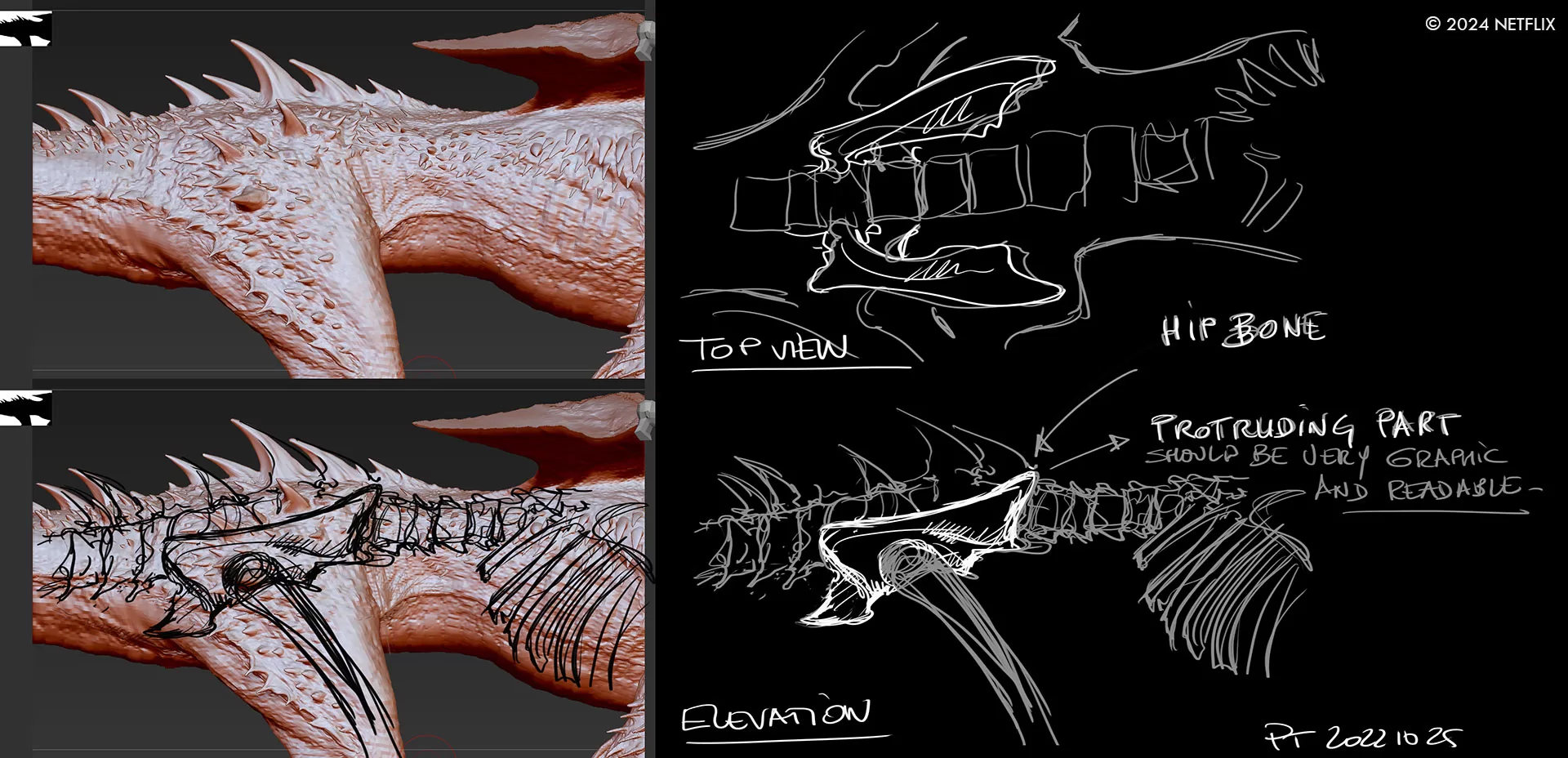
Were there any specific cultural or mythological references that influenced the design of the dragon?
Sticking with the cat theme, we were often pointed towards the gracefulness of the Sphinx as a guide towards how the dragon might look and behave.
Can you discuss any research or inspiration drawn upon to depict how the dragon is fire-breathing?
The fire in Damsel is quite unique. It blends both liquid and gaseous elements. This, of course, looks cool but it also helped with several story moments in the film. Explosive fire breathing simply moves too fast so we needed an excuse to slow the fire down a bit so it was believable that Elodie could escape it at a few points in the film. For research we looked at oil well fires, napalm, gas flame explosions and many other reference sources.
Were there any particular challenges or obstacles encountered during the design and animation phases of the dragon’s creation?
How to dragon speaks is probably the largest challenge we faced. The film makers really did not want a “rubbery lips” type of human lip sync, so we really had to think hard on how the dragon anatomy could work. In the end we settled on using the neck plates that the dragon has. They act as bellows to force air over the dragon’s larynx. The idea is that when the dragon inhales the neck plates open, and when she is speaking they compress to force the air to the right places to make sound. In additional we used high or low frequency vibration of the plates to indicate emotion. When the dragon is angry the neck plates vibrate at a much higher frequency.
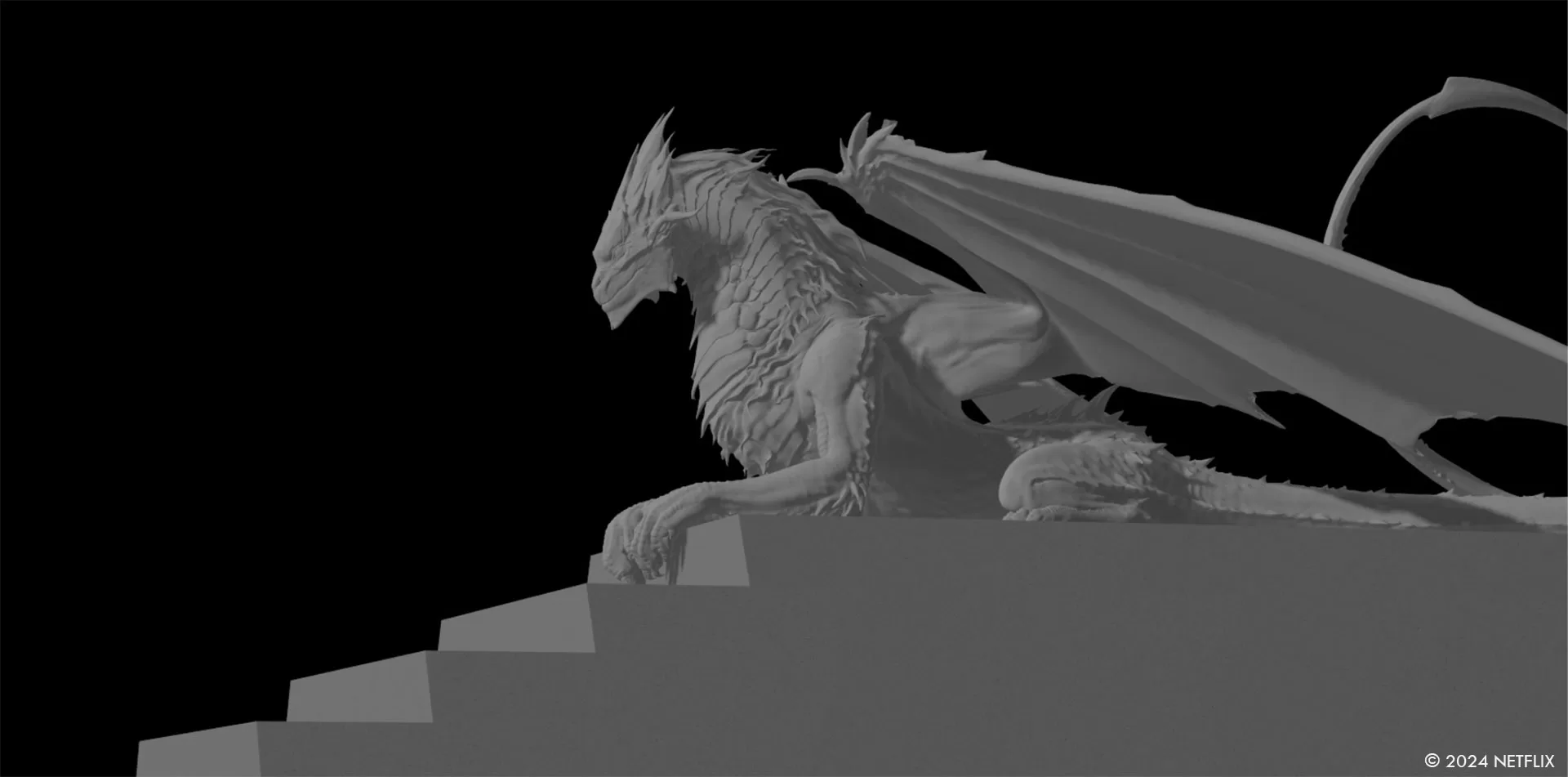
How did the team ensure that the dragon seamlessly integrated with the live-action footage in the film?
Lighting is of course key to this as is the normal requirements of matching black levels, grain, lens distortion, etc.
What were the considerations in terms of scale and proportion when designing the dragon to interact with human characters?
Mostly the dragon needed to be very intimidating, so we went big. She’s scaled to fit into the caves as well (which are also huge).
What were the main challenges with the dragon and especially when she is flying?
The anatomy of a cat mixed with the wings was challenging to balance when the dragon was flying. We did a lot of work to make her streamlined in the air, experimenting with how her legs pulled up towards the body and making sure she formed a dynamic line of action from the tip of her nose to the end of her tail as she moved.
We also wanted the dragon to live in her world and feel connected to the space so to further this we introduced several moments where she used the environment to change direction or speed by pushing off pillars or kicking off rocks. This helps avoid the feeling that the creature is separate from the space she occupies. The lighting also helps with this which is why we added in the very over exposed shafts of light that she could fly through.
Many sequences are inside the mountain. How does that affects your work and especially the lighting?
A lot. Ultimately we had a black dragon living in a dark cave which is a difficult proposition. We addressed this by using the logic that the camera was exposed for the dark cave which has some light bouncing around from the cracks in the mountain. This then allowed us to have the really hot, over exposed shafts of light stream in.
This gave us a few wins; first, we had nice dynamic lighting with real range to it. It also gave us the connection of the dragon to the space as she moved in and out of the shafts of light, and finally it gave us nice excuses to add additional rims or highlights on the dragon or environment. If there was a shaft of light in the upper left corner we had an excuse to put a rim light on the same side of the dragon.
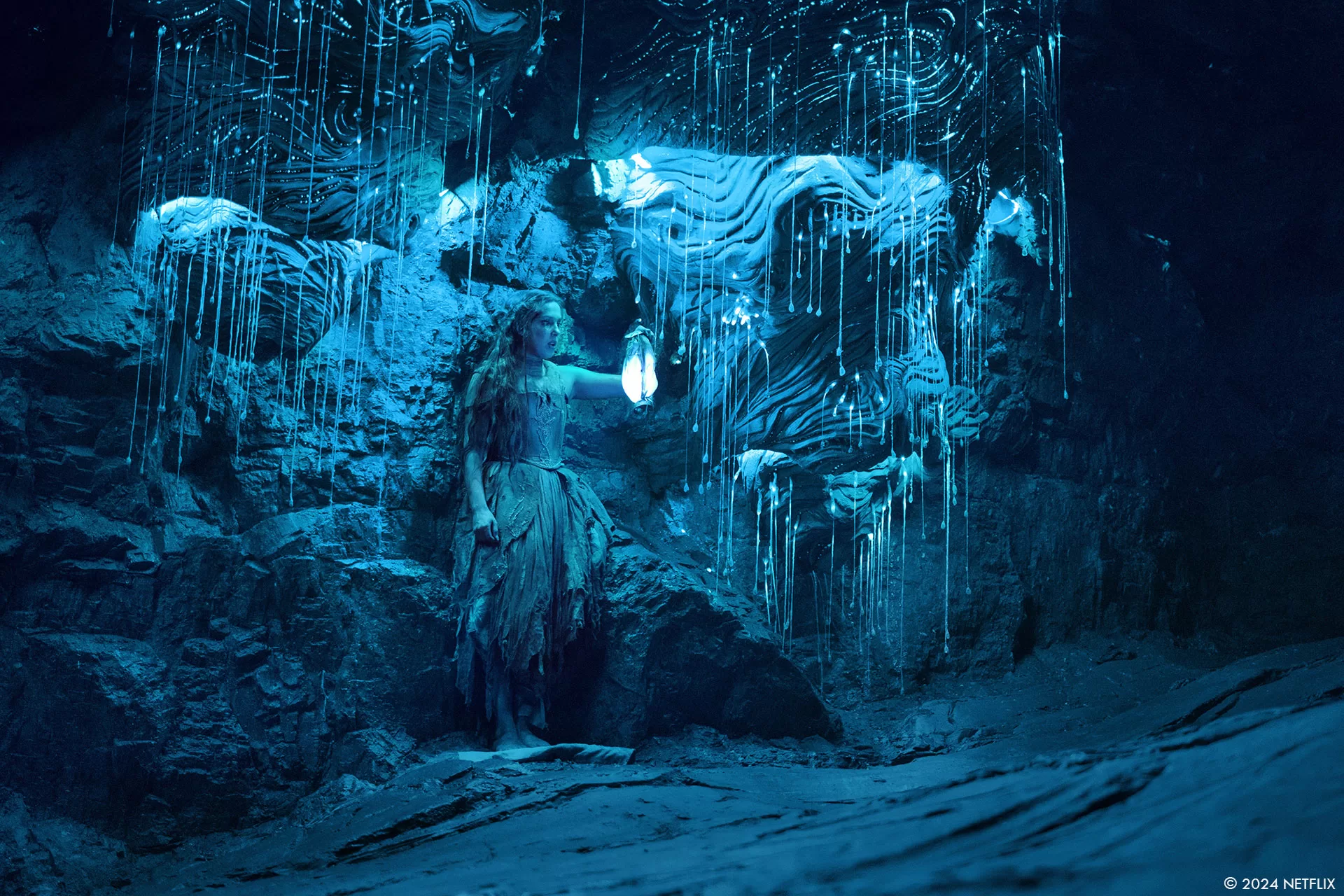
Which location was the most complicate to create?
They all had their challenges. The castle, however, took a lot of iteration simply because everyone knows what a castle looks like. It similar to how digital doubles can be very tough to pull off in close-up.
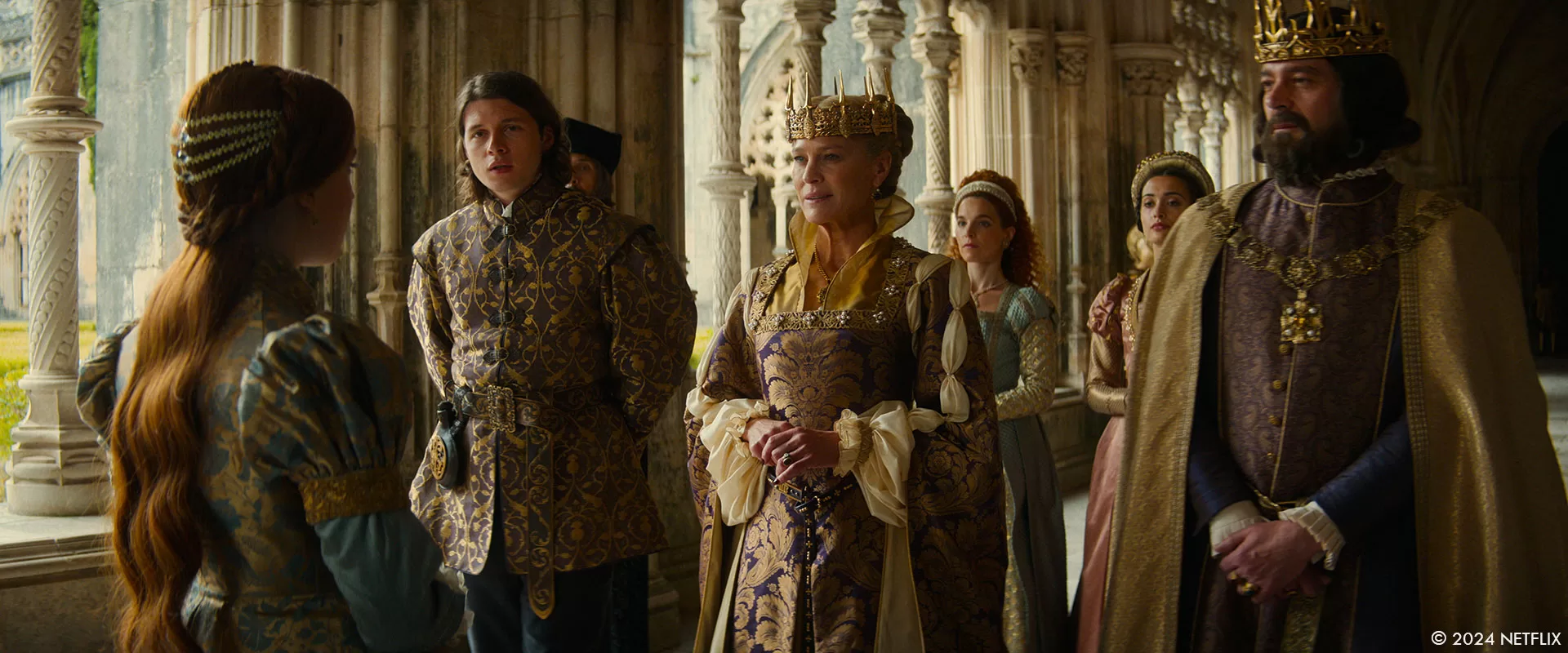
Can you elaborates about the final destruction of the castle?
This was a late addition to the film and really PXO did a great job to get it where it is in a very small amount of time. They had to pick up the castle from Rodeo and integrate it into their pipeline before destroying it. Of course, the castle wasn’t built to accommodate destruction so a rebuild was needed first. PXO is best placed to elaborate on the specific techniques used, but there are dozens of simulations that all have to work across three shots in continuity so it was a real challenge and one that they met head on.
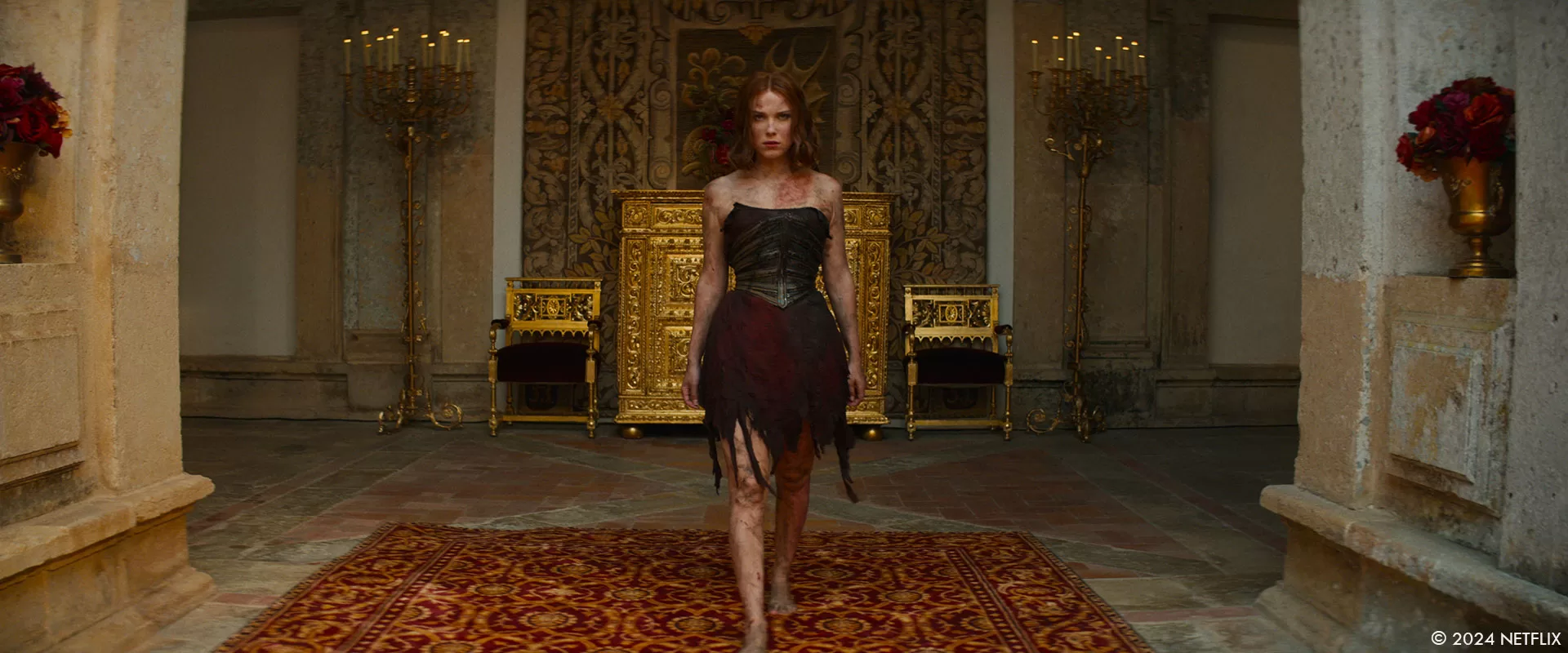
Were there any memorable moments or scenes from the series that you found particularly rewarding or challenging to work on from a visual effects standpoint?
The sequence of shots leading up to the death of Lord Bayford were great. It was a real performance moment for the dragon and one that I think is very suspenseful as you watch the film, especially when paired with David Fleming’s amazing score.
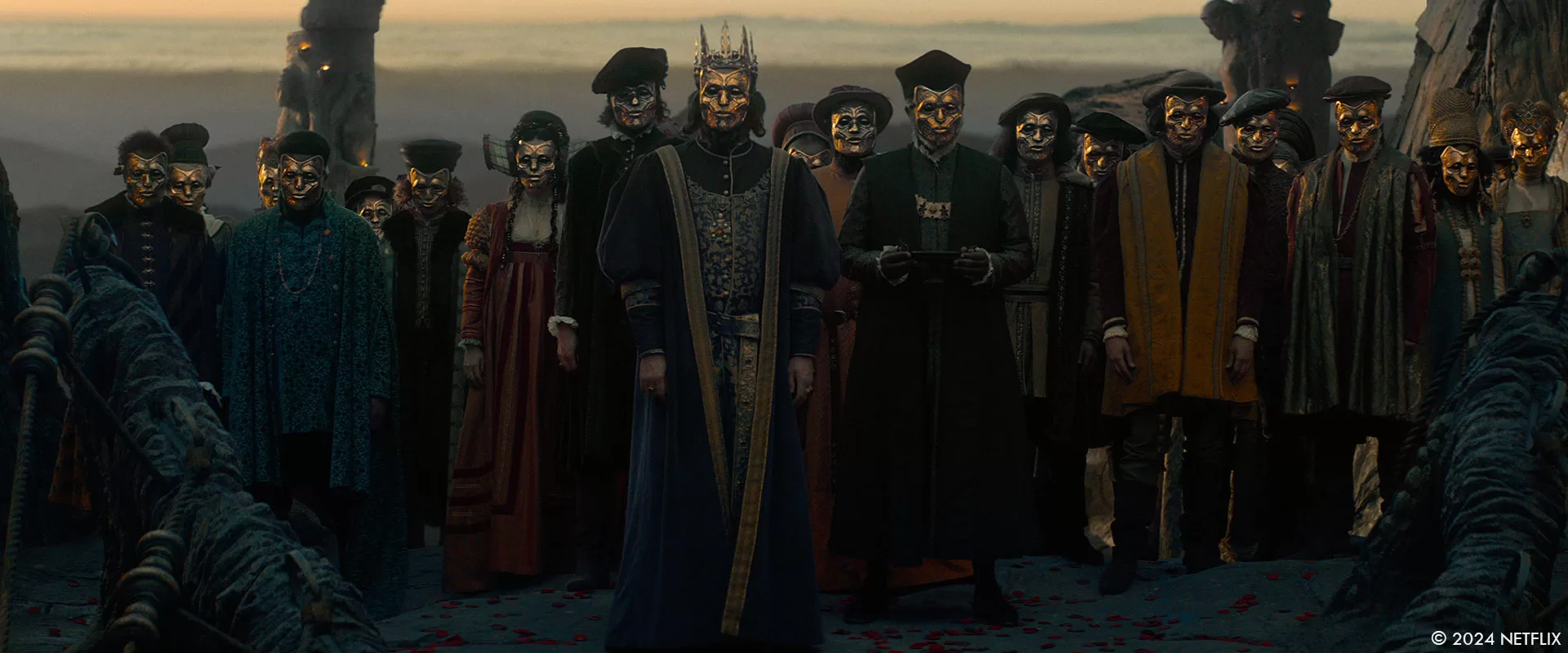
Looking back on the project, what aspects of the visual effects are you most proud of?
I think all the VFX stands on its own merit and the teams working on it should be very proud.
For me, however, what stands out is the group of people I was privileged to work with. Getting to know the director, JC as well as Patrick in production design and John Gibert, the film’s editor and of course all the VFX supervisors and producers at vendors was a real honour. As you spend more years in this business, and I’m coming up to 25 of them, the people you work with become a lot more important than what you work on. Luckily, with Damsel, I got it all!
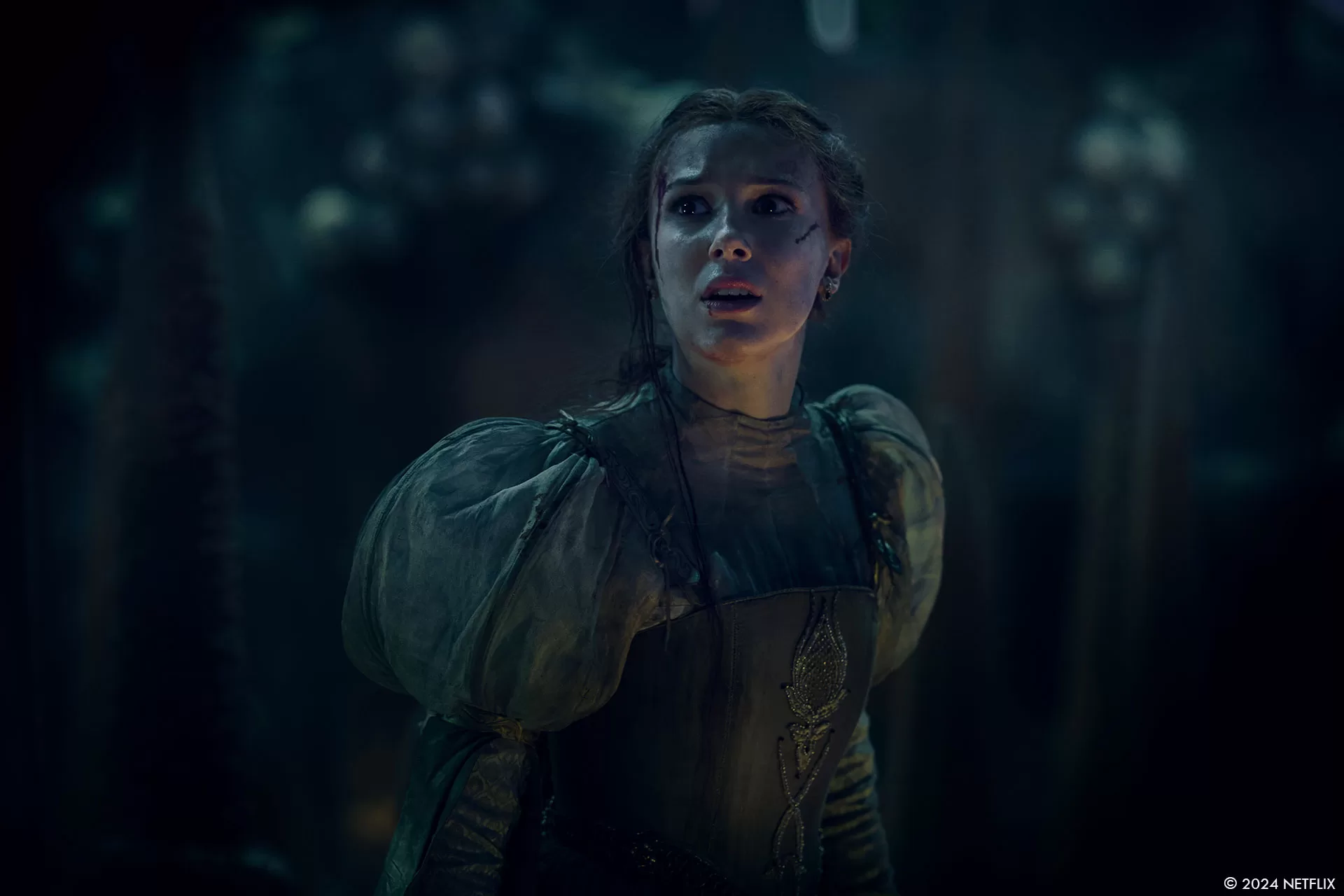
Tricky question, what is your favorite shot or sequence?
Favourite shots:
- Behind Elodie as the dust and embers from the dragons wings blow out the burning birds on the ground in the bird cave. The integration in this shot was great.
- The dragon out of focus in the ledge attack as she looks down towards Lord Bayford entering the caves. It was a great solution to keeping the dragon hidden while she’s still in full view.
- Dragon landing to find the guide. This was the first hero dragon face shot to be approved and is where we really dialed in the hero lighting, eyes, and skin.
- After the dragon kills the guide she jumps off the ledge to fly towards Elodie. This shot has a great combination of animation, fx, lighting and comp all coming together perfectly.
- Close up of the dragon looking past the sword stuck in the ground after Elodie refuses to kill her. Subtle performance, excellent lighting, nice shallow depth of field.
Favourite sequence:
- Reveal of the dragon as she swoops down to grab the knight and ends up confronting Lord Bayford.
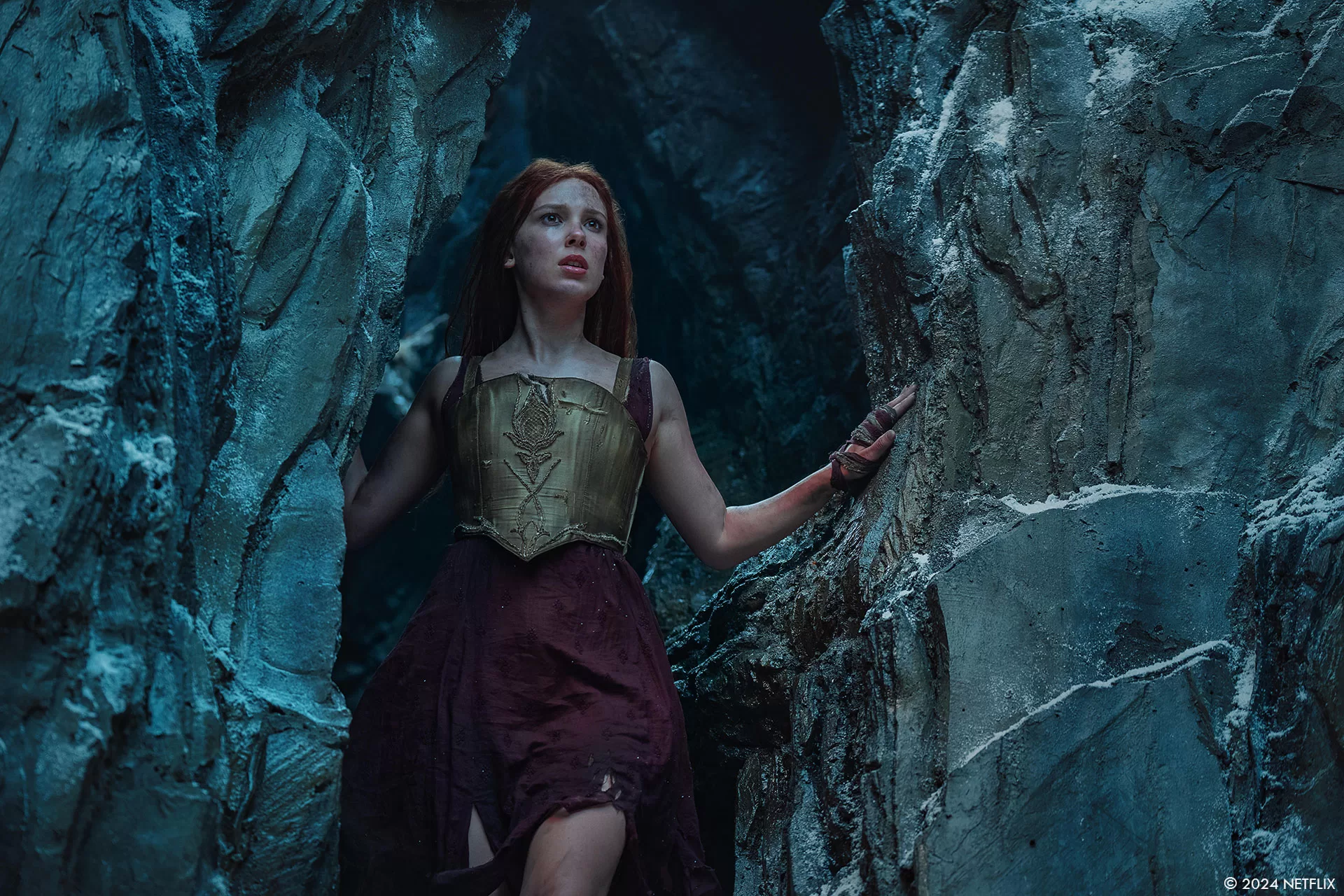
How long have you worked on this show?
16 Months by the end, I believe.
What’s the VFX shots count?
1202.
What is your next project?
To be determined! Right now I’m enjoying a nice long break
A big thanks for your time.
WANT TO KNOW MORE?
One of Us: Dedicated page about Damsel on One of Us website.
Rodeo FX: Dedicated page about Damsel on Rodeo FX website.
Netflix: You can watch Damsel on Netflix now.
© Vincent Frei – The Art of VFX – 2024




